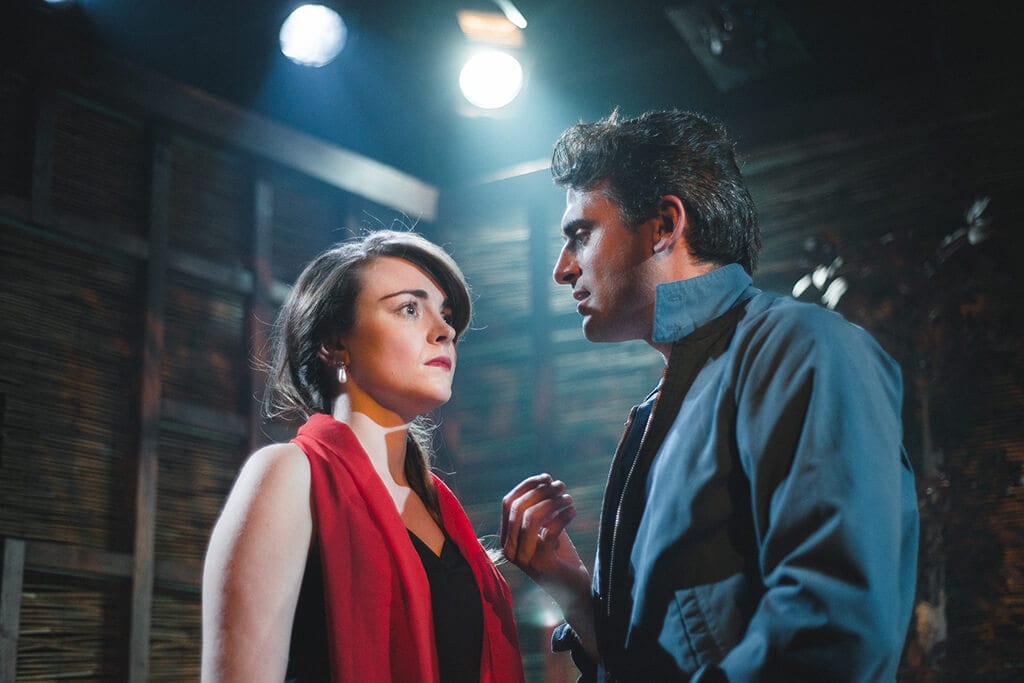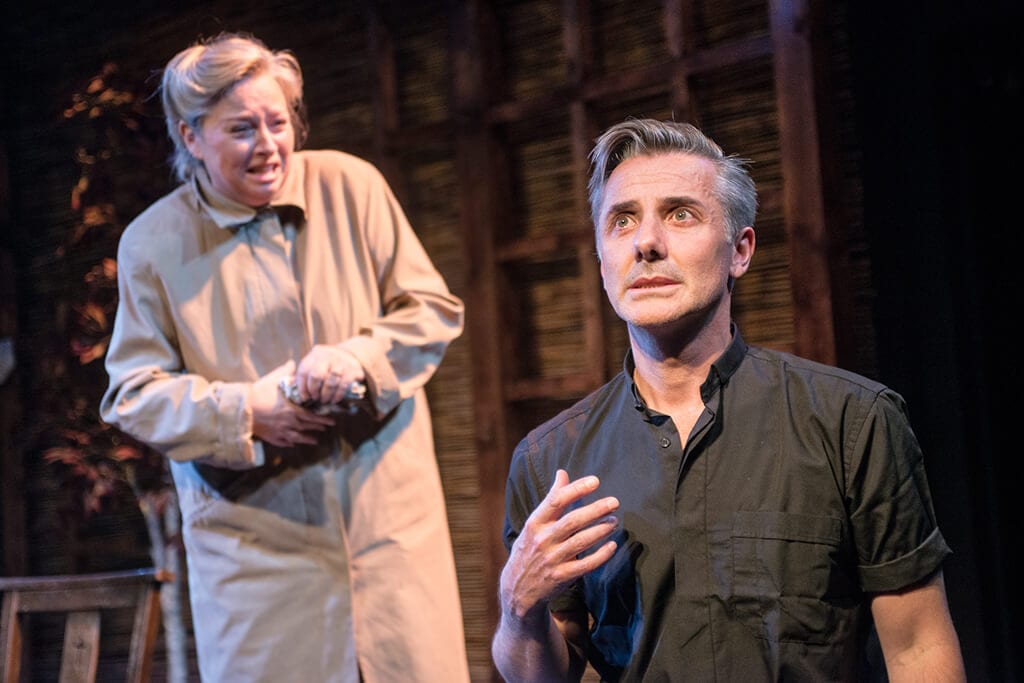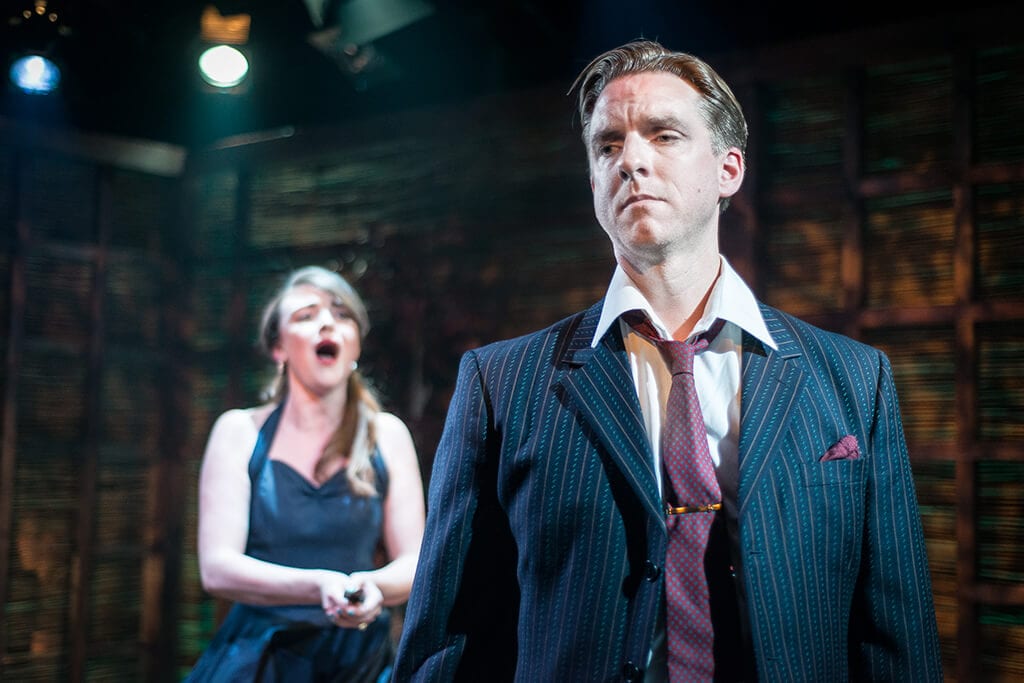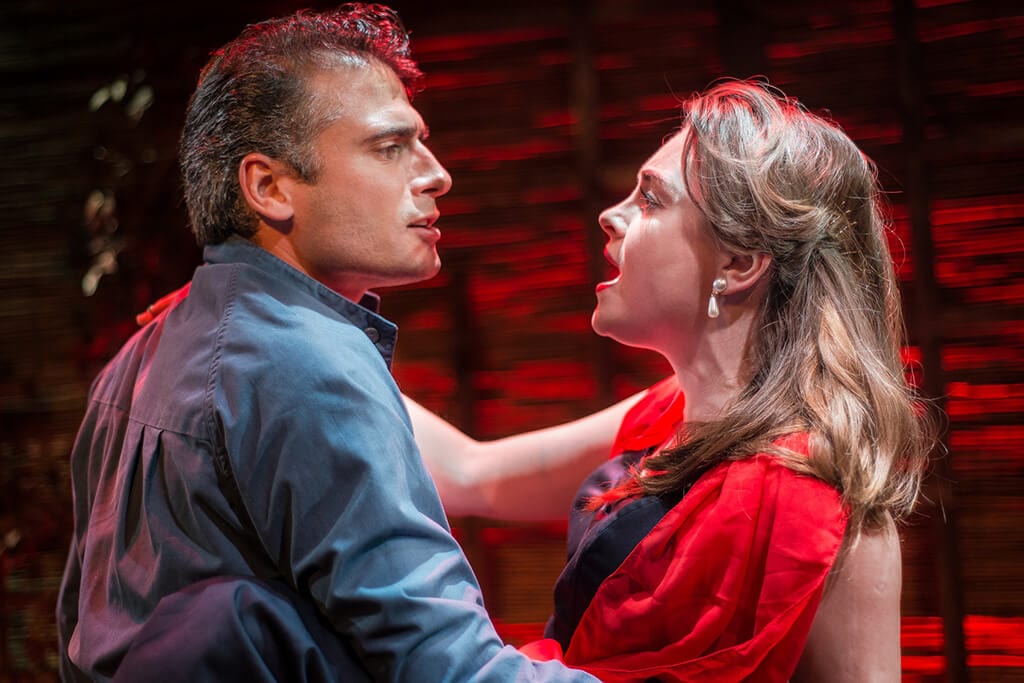See What I Wanna See is Michael John LaChiusa’s work inspired by 3 Ryunosuke Akutagawa short stories and a desire to push the boundaries of the Musical genre. The collective narratives that comprise the work span a huge timeframe, whilst the score covers a diverse range of styles from Classical and Jazz to Salsa. Having premiered Off Broadway in 2005 and subsequently touring the U.S. And UK, Adam Lenson’s production sees the show’s London Debut at Jermyn Street Theatre.
Both Act One And Two begin briefly in medieval Japan, with an adulterous couple bemoaning their final night together before killing the other for the sake of their honour. Cassie Compton opens as Kesa, the cheating wife, and her strength for the contemporary pop style means I’m engaged even if I’m not convinced by the setting. Her control and powerful belt continued to redeem some of the less compelling material.
In Act one, the scene swiftly moves to 1950s New York, where 4 characters give their statements to the police following the murder of a pinstripe-suited businessman in Central Park. It’s a pacy progression, cleverly and seductively weaving a narrative whole from disparate testimonies. Highlights include Marc Elliott who walks the line between charismatic and psychotic as The Thief and Compton’s fiery rendition of ‘No More’.
The same Japanese prologue, except from Morito’s perspective, opens Act Two followed by the story of a priest who loses his faith after 9/11 and attempts to give sight to the blind believers in NYC, by spreading a hoax rumour that a miracle will occur in Central Park. If the programme credits are anything to go by, it would seem that this production is also Jonathan Butterell’s professional acting debut, being better known as a choreographer and director. Judging from his performance it would appear that this might be the case. He was often ‘off voice’ in speech and occasionally off pitch in song, awkwardly moving about the stage and frequently delivering text to the floor. It is a shame, then, that the casting meant he was the major feature of this act with his, at times, disengaging characterisation.
However, Butterell wasn’t the primary reason I found Act Two uninspiring on the whole. Whilst current and interesting in concept, the conceit when played out wasn’t credible and there wasn’t enough depth in the stock character types drawn to the Priest (a CPA, an actress and a reporter) for the rest of the cast to get their teeth into. Their individual quests for the miraculous felt contrived, and it seemed to me that they were aware of this. The exception was the Priest’s atheist Aunt Monica, charmingly fleshed out by Sarah Ingram and her delivery of ‘The Greatest Practical Joke’ brought a little Broadway to the action. Similarly, the chorally dramatic ‘Rising Up’ was unexpectedly beautiful and dynamically staged. The number elevated an act which had felt too quiet and unable to transcend the relatively small theatre.
LaChiusa’s unusual musical is ambitious in its scope of weighty human conundrums and the challenge of getting other people to see what we see in light of our irreconcilable subjectivity. I have a feeling that the response to its London run will be divided. Perhaps it’s trying to do too much or perhaps it’s intended for an audience more sophisticated than me. I can’t promise you won’t be bored but I can say See What I Wanna See certainly has the capacity to surprise.





